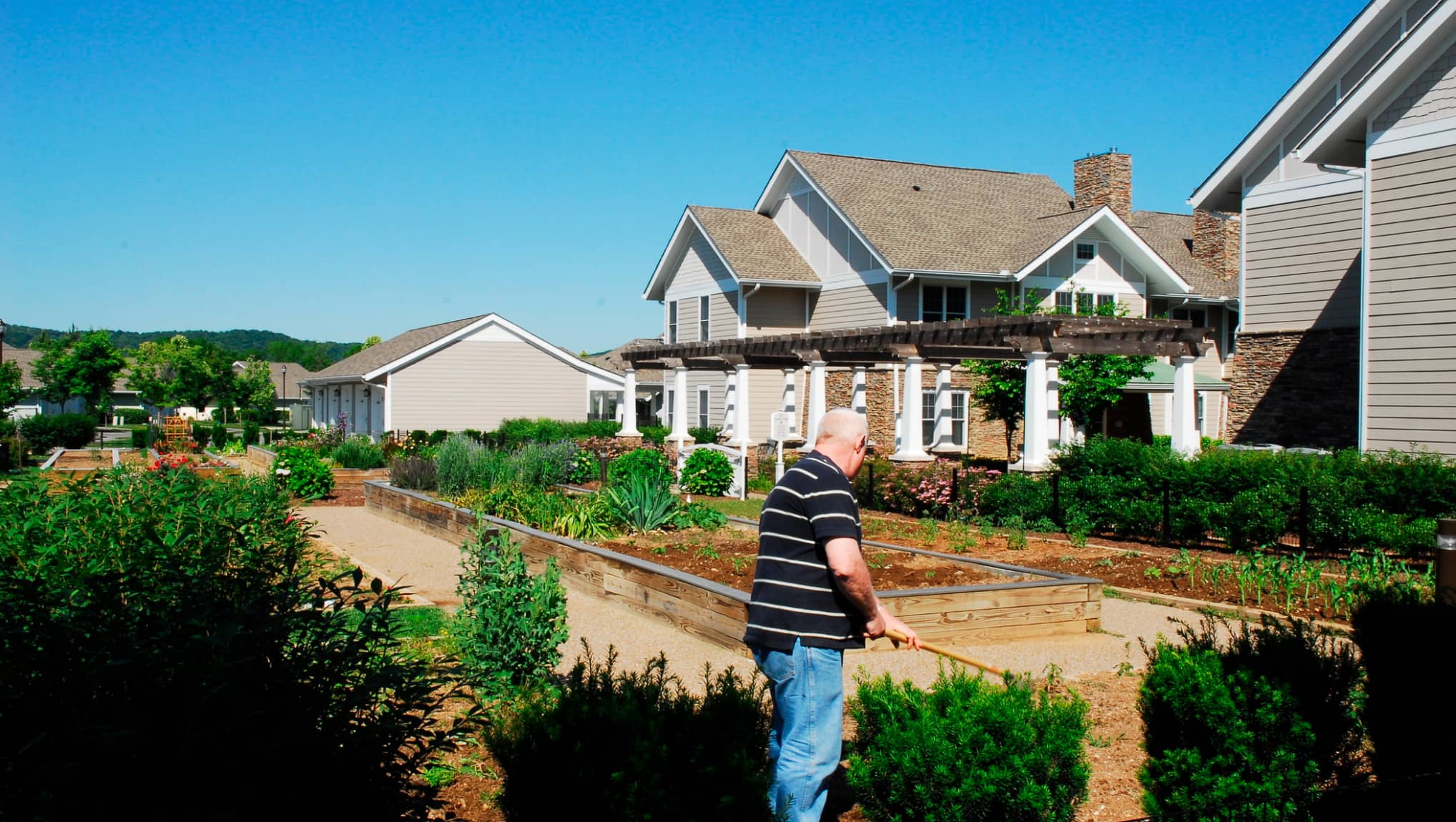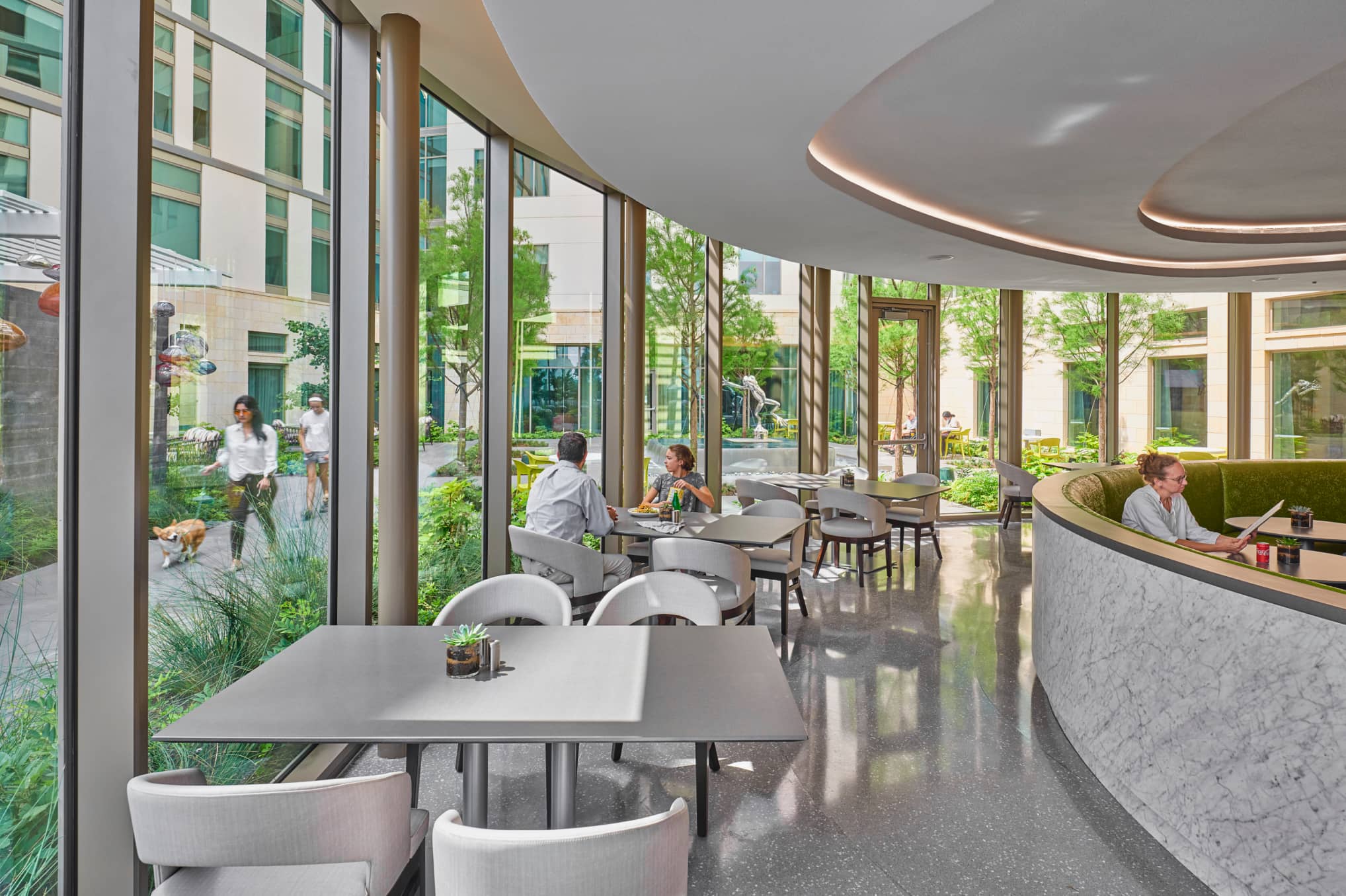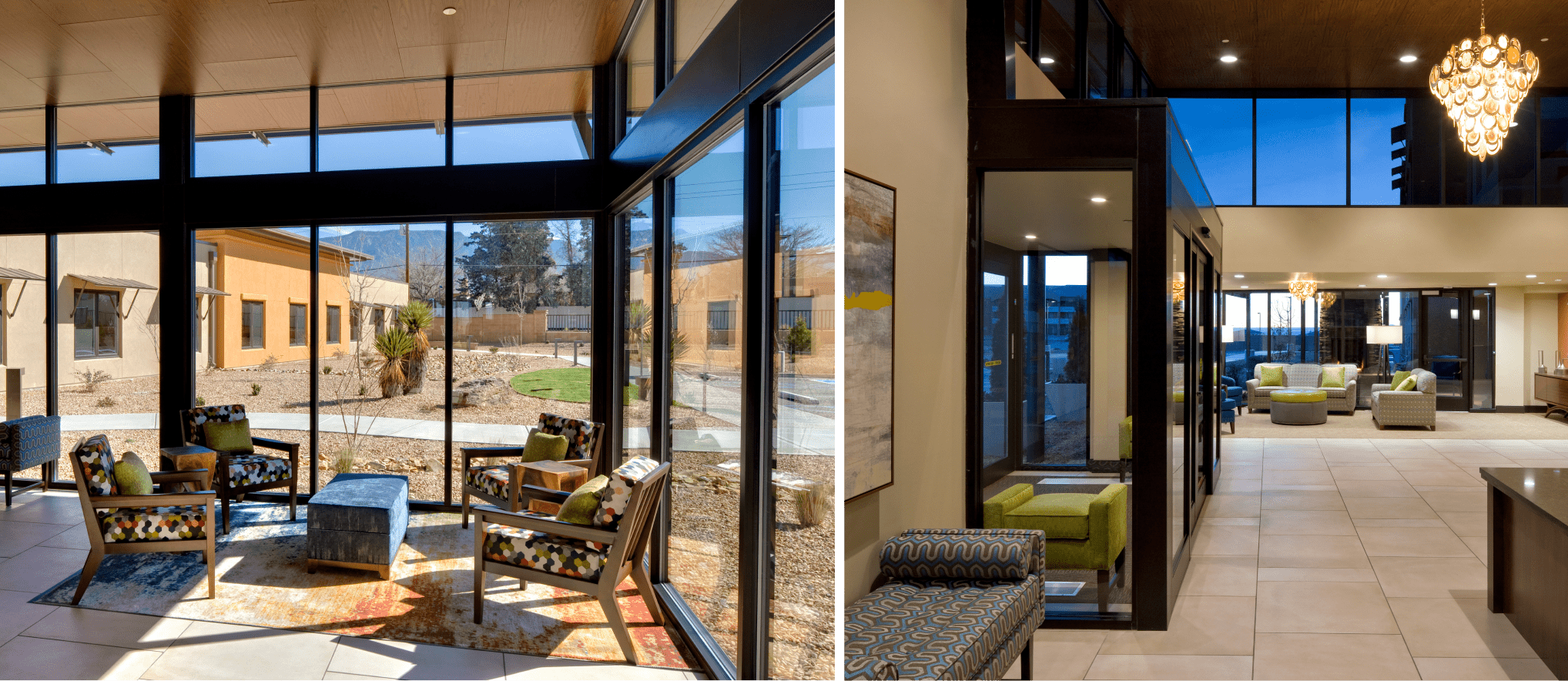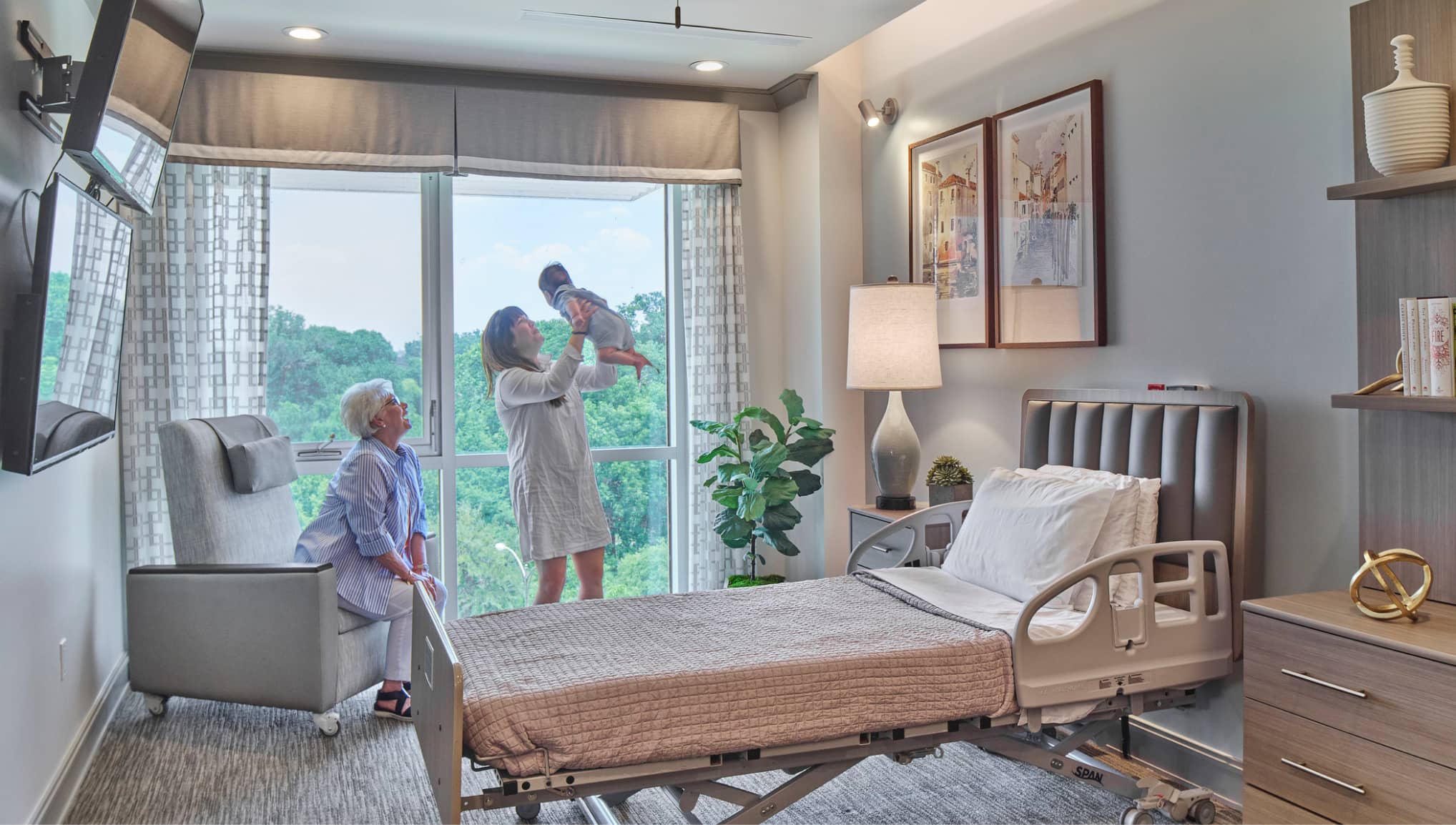
Fostering Community and Combating Loneliness in Senior Living Design
- Erin Peavey
- Siobhan Farvardin
Susan Sereboff used to live in a gated community where she could go for nice walks whenever she wanted.
“But then I would come home to an empty house,” she said.
That feeling of isolation prompted Susan to move to Legacy Senior Communities Legacy Midtown Park, a senior living community located just north of downtown Dallas. Sereboff’s new community — where the minimum age for residents is 55 — gave her a new outlook and new friends.
“Most of all, I love having people to visit,” Sereboff said.
So does Sandy Gorman, who also recently relocated to Legacy Midtown Park along with her husband, Dan.
Sereboff, Gorman and many other senior citizens are by no means alone in their desire for connection. It is a situation exacerbated by COVID-19, whose effects have been especially devastating to that age group. As the U.S. and the world continue to battle the pandemic, many seniors are looking for living spaces that provide safe social connection and ease their fears of isolation.
For several seniors, their searches began in 2020 during the height of the initial COVID wave.
“In the COVID year, socialization disappeared,” said Linda Elkin who moved to Legacy Midtown Park recently from Frisco, TX, along with her husband, Larry “When people age, they have a tendency to become more isolated and living in a place like this does away with that. You cannot help but socialize.”
HKS-designed Legacy Midtown Park is one example of what it looks like to design for community and connection at all scales. Using an evidence-based model developed by this piece’s co-author, Erin Peavey, we explore examples of how those design principles can be adapted to senior living spaces.
Through interviews with current residents, family members and administration, we describe how these strategies can work not only at Legacy, but as a model for connection in other senior living communities.
Ease of Access for All
Although accessibility is commonly thought of in terms of disability, true accessibility means leveling the playing field to make it not only possible, but convenient and welcoming for all to participate while maintaining their sense of dignity. For example, creating shared spaces, such as a casual café, or living space that is off the primary walking area in a building lowers the barrier to entry and welcomes people to come and join. This is essential for developing habits where people can regularly bump into one another.
Additionally, consider that for many seniors, seemingly simple daily tasks such as walking to social areas or even getting to or using a restroom can sometimes become arduous. To help alleviate that concern, designers should consider corridor and hallway lengths as well as frequency of respite areas and both interior and exterior access points.
It’s also important that senior living communities provide unisex restrooms in common areas that better cater to the senior residential population such as when a caregiver might be assisting a resident.
And amenities outside the walls of the building are just as vital as those inside it. For example, the Heritage at Brentwood in Brentwood, Tennessee provides raised planters for gardening that help alleviate the need for excessive bending or kneeling and allows residents more agency in shaping the future of their community.
At StoneCreek at Flying Horse community in Colorado Springs, Colorado, nature trails connecting a variety of dwelling arrangements ranging from hybrid homes to independent living flats and Assisted Living and Memory Support apartments, allow for an all-inclusive community that creates a sense of village or community that supports various acuities as needed.


Shared Activities Bind Us
Spaces and places that engage, that pull people in and invite them to participate in shared activities, can create great focal points and conversation starters. These “sticky spaces” can have rotating activities that support different abilities, and often have food, drink and restrooms nearby. This allows people to create their own natural routines, like having early morning coffee on the patio or chance meetings with neighbors.
Informal dining venues such as grab and go’s or a casual bistro can be designed to be diverse and inclusive. And not just for residents, but staff as well who, in some cases, have become like family to the residents. At Watercrest Sarasota in Florida, the bistro sits in the heart of the community with adjacent lounge seating nearby, making it a convenient connection point for residents and staff and helping to ease feelings of loneliness caused by a variety of factors.

Choice is the Spice of Life; Nature Helps, too
Having autonomy and control are essential to our well-being, and environments that provide some degree of choice help to facilitate those feelings. When referencing the dining spaces at Legacy Midtown Park, one resident put it this way, “Each serves a different purpose. We really enjoy the informality of Stanley’s and the convenience of being able to do it. But it is kind of nice getting to do the formal dining, too.”
By providing small choices, like whether to eat inside or out, formal or informal dining, and which activities one wants to engage, senior living residents can control their lives in a way that helps them to build confidence and stay engaged.
And nature helps, too. The positive effects of nature are well recognized as enhancers to our physical and mental health, but they can also help build feelings of comfort, openness, and even trust between neighbors. Embedding nature, from outdoor walking trails, indoor plants, or shared gardens or outdoor spaces, allows residents to engage with nature and benefit from it. And large windows can help maintain that feeling of always having access to the outdoors.

Fit to Human Scale
Creating comfort is essential to helping foster social interaction and connection. Designing spaces that fit natural social scales, and leverage the concept of prospect and refuge, can allow people to feel safe and covered while allowing connectivity with others and to the outdoors.
To accomplish this, The Watermark at Cherry Hills Assisted Living and Memory Care offers flexible seating options throughout its cafes, outdoor spaces, and formal dining areas. This allows residents to customize the space to fit one person who might be reading a book, or for a larger group or family to sit together. Small touches like recessing the doorway or creating varying ceiling heights can help facilitate a feeling of safety and coziness that promote more intimate gatherings.

Create a Unique Identity
Just as new college students moving into a dorm room for the first time want to create a unique sense of space and identity, so it is with seniors who move into a new residence. With seniors, though, their new home may be their final move, so it is vital that it is comfortable, safe, and tailored to their needs, providing a sense of excitement and familiarity without making them feel isolated.
And providing those unique touches helps eliminate the cookie-cutter approach often found in the senior living design of yesteryear. CC Young’s Senior Living Community in Dallas uses built in casework where residents can add personal memorabilia that can help spark conversation with neighbors and relatives. Providing a variety of lighting such as cove lighting, direct and adjustable task lighting with the option for table lamps also eliminated the clinical feeling.
Painted gypsum ceilings with strategically placed access panels for HVAC access are preferred over clinical lay-in ceiling tile because this is more like home to the patient who will spend much of their time in a bed in the case of skilled nursing. These design attributes give residents more ownership and sense of pride when entertaining family and other visitors.

